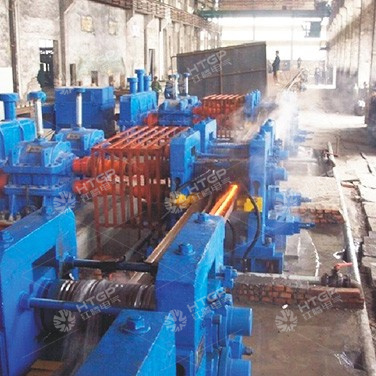We will share with you today, about the three basic laws of steel rolling production.
The first is the volume invariance law.
We know that the law of invariance of mass is objective in nature, mass = density × volume. Therefore, it can be seen that in the process of pressure processing, as long as the density of the metal does not change, its volume will not change before and after deformation.
During hot rolling of steel, the volume changes before and after processing due to bubbles, shrinkage or loosening in the slab are very small. Therefore, in the theoretical research and engineering of metal pressure machining, it is generally believed that the volume of metal is constant before and after deformation.
During cold rolling, the density of the metal is reduced by about 0.1% to 0.2%. Obviously, these volume changes are negligible.
The second is the law of least resistance.
The law of least resistance is a general principle of mechanics. In the theory of metal plastic deformation, it can be used to analyze the flow law of particles, and also can be used to qualitatively analyze the flow direction of metal particles.
Gubkin says that while the particles of the deformed body may move in different directions, each particle moves in the direction of least resistance. Because the circumference of a circle is the shortest at the same cross-sectional area, the law of least resistance is also called the law of least circumference.
Golovin's theory is that there is friction between the contact surface of the tool and the metal. If the performance of the metal body is uniform and the friction coefficient of the contact surface is exactly the same, the work done by the friction resistance of the customer when the particle flows to the free surface is proportional to the distance between the particle and the contact surface. Therefore, the closer to the free boundary, the lower the resistance, and the metal particles must flow in this direction, that is, along the shortest line of the section.
The last one is about the coexistence of elastic-plastic deformation.
Metals are composed of polycrystals, each of which has a different orientation of the atoms.
Under the action of external force, some grains are in the orientation favorable to deformation, and some grains are in the orientation unfavorable to deformation. Thus, atoms in some grains can move to a new equilibrium position, while atoms in other grains can only move to distances less than 1/2 the atomic distance.
Therefore, at some point in the macroscopic deformation, some atoms must be in an unstable state in the process of moving from one stable position to another. Once unloaded, these unstable atoms will return to their original stability. Upward position, which shows a small amount of elastic recovery.
This is what we share today. I hope it can be helpful to you. Welcome to pay attention to Luoyang Judian for more information about steel rolling production.

Please send us your request and we reply to you with in 24 hours.
Submit Request